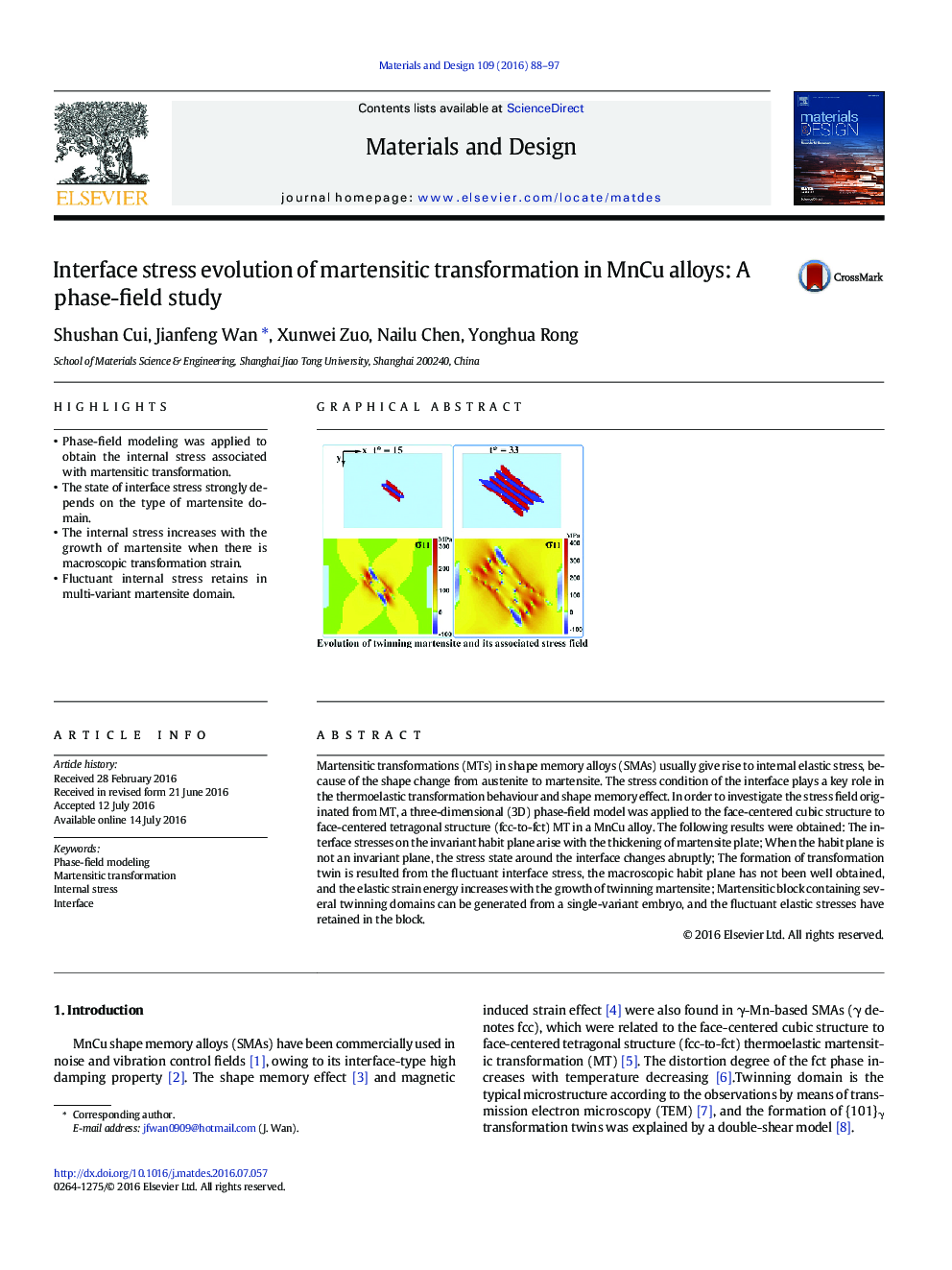| Article ID | Journal | Published Year | Pages | File Type |
|---|---|---|---|---|
| 827678 | Materials & Design | 2016 | 10 Pages |
•Phase-field modeling was applied to obtain the internal stress associated with martensitic transformation.•The state of interface stress strongly depends on the type of martensite domain.•The internal stress increases with the growth of martensite when there is macroscopic transformation strain.•Fluctuant internal stress retains in multi-variant martensite domain.
Martensitic transformations (MTs) in shape memory alloys (SMAs) usually give rise to internal elastic stress, because of the shape change from austenite to martensite. The stress condition of the interface plays a key role in the thermoelastic transformation behaviour and shape memory effect. In order to investigate the stress field originated from MT, a three-dimensional (3D) phase-field model was applied to the face-centered cubic structure to face-centered tetragonal structure (fcc-to-fct) MT in a MnCu alloy. The following results were obtained: The interface stresses on the invariant habit plane arise with the thickening of martensite plate; When the habit plane is not an invariant plane, the stress state around the interface changes abruptly; The formation of transformation twin is resulted from the fluctuant interface stress, the macroscopic habit plane has not been well obtained, and the elastic strain energy increases with the growth of twinning martensite; Martensitic block containing several twinning domains can be generated from a single-variant embryo, and the fluctuant elastic stresses have retained in the block.
Graphical abstractFigure optionsDownload full-size imageDownload as PowerPoint slide
